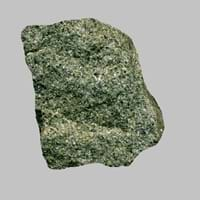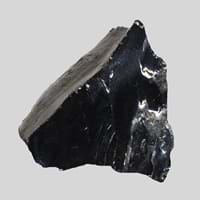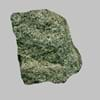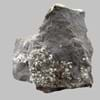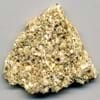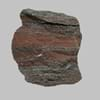Definition
Greywacke is defined as a dark coarse-grained sandstone rock which contains more than 15 per cent clay
Anthracite is a type of sedimentary rock which is hard and is variety of coal that has high luster
Origin
Unknown
Pennsylvania, U.S.
Discoverer
Unknown
Unknown
Etymology
From German Grauwacke, from grau grey + wacke
From Greek anthrakites, from anthrax, anthrak meaning coal
Class
Sedimentary Rocks
Metamorphic Rocks
Sub-Class
Durable Rock, Hard Rock
Durable Rock, Soft Rock
Group
Not Applicable
Not Applicable
Other Categories
Fine Grained Rock, Opaque Rock
Coarse Grained Rock, Fine Grained Rock, Medium Grained Rock, Opaque Rock
Texture
Clastic
Amorphous, Glassy
Color
Beige, Black, Brown, Colourless, Cream, Dark Brown, Green, Grey, Light Green, Light to Dark Grey, Pink, Red, White, Yellow
Black, Brown, Dark Brown, Grey, Light to Dark Grey
Durability
Durable
Durable
Appearance
Dull
Veined or Pebbled
Interior Uses
Decorative Aggregates, Floor Tiles, Flooring, Homes, Interior Decoration
Not Yet Used
Exterior Uses
As Building Stone, As Facing Stone, Garden Decoration, Office Buildings, Paving Stone
Not Yet Used
Other Architectural Uses
Curbing, Whetstones
Not Yet Used
Construction Industry
Building houses or walls, Cement Manufacture, Construction Aggregate, for Road Aggregate, Raw material for the manufacture of mortar
Cement Manufacture, for Road Aggregate, Making natural cement, Steel Production
Medical Industry
Not Yet Used
In Chemical and Pharmaceutical Industry, Manufacture of Aspirins
Antiquity Uses
Artifacts, Sculpture, Small Figurines
Not Yet Used
Commercial Uses
As armour rock for sea walls, Petroleum reservoirs, Sea Defence, Tombstones
Alumina Refineries, Electricity Generation, Liquid Fuel, Manufacture of Soap, Solvents, Dyes, Plastics and Fibres, Paper Industry
Types
Not Available
Semi-anthracite and Meta-anthracite
Features
Available in Lots of Colors and Patterns, Generally rough to touch, Non-vesicular, Veined
Helps in production of Heat and Electricity, Used as fossil fuel
Archaeological Significance
Monuments
Not Yet Used
Not Yet Used
Famous Monuments
Not Applicable
Not Applicable
Sculpture
Used
Not Yet Used
Famous Sculptures
Data Not Available
Not Applicable
Pictographs
Not Used
Used
Petroglyphs
Not Used
Used
Figurines
Used
Not Yet Used
Formation
Graywacke rock is a type of sedimentary rock, which is also known as immature sandstone, which is indurated, dark grey and consisting of poorly sorted angular to sub-angular, sand-sized grains.
Anthracite forms from the accumulation of plant debris in a swamp environment. When plant debris dies and falls into the swamp, the standing water of the swamp protects it from decay.
Mineral Content
Augite, Biotite, Calcite, Chlorite, Clay, Clay Minerals, Feldspar, Micas, Muscovite or Illite, Plagioclase, Pyroxene, Quartz
Calcite, Clay, Clay Minerals
Compound Content
Aluminium Oxide, NaCl, CaO, Chromium(III) Oxide, Iron(III) Oxide, FeO, Potassium Oxide, Magnesium Carbonate, MgO, MnO, Sodium Oxide, Phosphorus Pentoxide, Silicon Dioxide, Titanium Dioxide
Carbon, Hydrogen, Nitrogen, Oxygen, Sulphur
Types of Metamorphism
Not Applicable
Burial Metamorphism, Contact Metamorphism, Regional Metamorphism
Types of Weathering
Biological Weathering, Chemical Weathering
Not Applicable
Types of Erosion
Coastal Erosion, Sea Erosion, Wind Erosion
Not Applicable
Grain Size
Angular and Fine
Medium to Fine Coarse Grained
Fracture
Conchoidal
Conchoidal
Porosity
Highly Porous
Less Porous
Cleavage
Perfect
Non-Existent
Toughness
2.6
Not Available
Specific Gravity
2.2-2.8
1.1-1.4
Transparency
Opaque
Opaque
Density
2.6-2.61 g/cm3
1.25-2.5 g/cm3
Specific Heat Capacity
Not Available
Resistance
Heat Resistant, Impact Resistant, Pressure Resistant
Heat Resistant, Water Resistant
Deposits in Eastern Continents
Asia
China, India, Kazakhstan, Mongolia, Russia, Uzbekistan
Bangladesh, Burma, Cambodia, China, India, Indonesia, Kazakhstan, Malaysia, Mongolia, Pakistan, Turkey, Vietnam
Africa
Namibia, Nigeria, South Africa
Botswana, Kenya, Morocco, Mozambique, South Africa, Tanzania
Europe
Austria, Denmark, Germany, Great Britain, Netherlands, Norway, Poland, Sweden, Switzerland, United Kingdom
Belgium, Bulgaria, England, France, Germany, Greece, Hungary, Kosovo, Netherlands, Norway, Poland, Romania, Serbia, Slovakia, Slovenia, The Czech Republic, Ukraine, United Kingdom
Others
Greenland
Not Yet Found
Deposits in Western Continents
North America
Canada, USA
Canada, Mexico, USA
South America
Brazil
Brazil, Chile, Colombia, Venezuela
Deposits in Oceania Continent
Australia
New South Wales, New Zealand
New South Wales, Queensland, Victoria
Greywacke vs Anthracite Characteristics
Though some rocks look identical, they have certain characteristics which distinguish them from others. Characteristics of rocks include texture, appearance, color, fracture, streak, hardness etc. Greywacke vs Anthracite characteristics assist us to distinguish and recognize rocks. Also you can check about Properties of Greywacke and Properties of Anthracite. Learn more about Greywacke vs Anthracite in the next section. The interior uses of Greywacke include Decorative aggregates, Floor tiles, Flooring, Homes and Interior decoration whereas the interior uses of Anthracite include Not yet used. Due to some exceptional properties of Greywacke and Anthracite, they have various applications in construction industry. The uses of Greywacke in construction industry include Building houses or walls, Cement manufacture, Construction aggregate, For road aggregate, Raw material for the manufacture of mortar and that of Anthracite include Cement manufacture, For road aggregate, Making natural cement, Steel production.
More about Greywacke and Anthracite
Here you can know more about Greywacke and Anthracite. The life cycle of a rock consists of formation of rock, composition of rock and transformation of rock. The composition of Greywacke and Anthracite consists of mineral content and compound content. The mineral content of Greywacke includes Augite, Biotite, Calcite, Chlorite, Clay, Clay Minerals, Feldspar, Micas, Muscovite or Illite, Plagioclase, Pyroxene, Quartz and mineral content of Anthracite includes Calcite, Clay, Clay Minerals. You can also check out the list of all Sedimentary Rocks. When we have to compare Greywacke vs Anthracite, the texture, color and appearance plays an important role in determining the type of rock. Greywacke is available in beige, black, brown, colourless, cream, dark brown, green, grey, light green, light to dark grey, pink, red, white, yellow colors whereas, Anthracite is available in black, brown, dark brown, grey, light to dark grey colors. Appearance of Greywacke is Dull and that of Anthracite is Veined or Pebbled. Properties of rock is another aspect for Greywacke vs Anthracite. The hardness of Greywacke is 6-7 and that of Anthracite is 1-1.5. The types of Greywacke are Not Available whereas types of Anthracite are Semi-anthracite and Meta-anthracite. Streak of rock is the color of powder produced when it is dragged across an unweathered surface. The streak of Greywacke is white while that of Anthracite is black. The specific heat capacity of Greywacke is Not Available and that of Anthracite is 1.32 kJ/Kg K. Depending on the properties like hardness, toughness, specific heat capacity, porosity etc., rocks are resistant to heat, wear, impact, etc.Greywacke is heat resistant, impact resistant, pressure resistant whereas Anthracite is heat resistant, water resistant.
